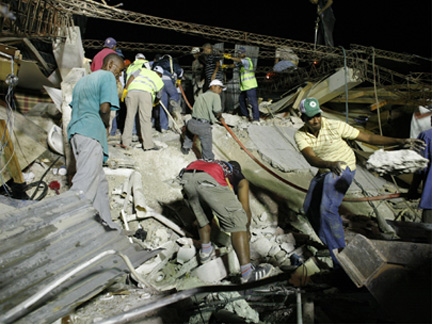Haiti quake - rescue efforts
First 24 hours are crucial, say experts
Article published on the 2010-01-13 Latest update 2010-01-13 12:48 TU
The chances of survival for those still trapped decrease rapidly after the first day as people succumb to their injuries and struggle to breathe under the rubble, according to Masanori Hamada, professor of earthquake engineering at Waseda University in Tokyo, Japan.
As well as removing the casualties, rescuers must also meet vital needs such as food, water, medical aid and shelter, Professor Hamada told the AFP news agency.
The relief effort will be further complicated by the fact that Haiti's infrastructure and communications systems have been severely damaged in the 7.0 quake - while the country's extreme poverty has raised risks of looting and social unrest.
Over 1.5 million people were within 20km of the earthquake's epicentre when it struck on Tuesday, geophysicist Randy Baldwin of the US Geological Survey told RFI.
Following the quake - the largest to hit Haiti in at least 100 years - there have been "well over 30 aftershocks, in a magnitude range from about 4.0 to 5.9," he said.
Baldwin warns that these aftershocks can pose "significant danger", as buildings weakened in the initial shock collapse.
He advises people in the area to stay away from weakened structures while the aftershocks continue, which they are expected to do "for some time".
See also







